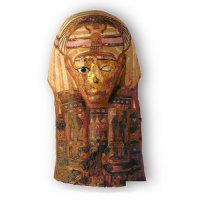Evidence for the systematic use of antimicrobial and insecticidal natural products in ancient Egyptian burial practices
Description
The project investigates the extent to which the ancient Egyptians exploited natural products for their beneficial preservative properties in the treatment of their dead, i.e. mummification.
Specifically, the study is exploring to what extent these materials were used systematically according to their particular chemical, physical and biological properties. Initial work suggests that antibacterial products, such as terpenoid resins, were employed in close proximity to the body, whereas hydrophobic/barrier materials, such as beeswax and, to a much lesser extent, bitumen, were used externally – serving to exclude moisture, and exogenous bacteria and fungi which would otherwise reinitiate decomposition of the corpse.
Any potential symbolic/religious significance must also be considered.
The scientific approach involves molecular separation and identification as the most appropriate means of characterising and identifying these highly degraded complex organic materials, which includes both plant- and animal-derived products. HPLC and LC/MS are being used to identify the many polar commodities likely to be present. GC/MS and Py-GC/MS are being used to identify non-polar materials, such as the waxes, in order to determine their role in the overall preservation of the body.
The focus of this work is on Egyptian mummies from the beginning of the New Kingdom (c.1500B.C.) to end of the dynastic (true Egyptian) period (c.350 B.C.). From the New Kingdom, mummification became an increasingly sophisticated process involving evisceration and removal of the brain, with its peak being reached c.1400-1000 B.C.
Importantly, the study excludes the Ptolemaic and Roman periods where the influence of these very different cultures necessarily bastardised what was a peculiarly Egyptian practice, with true preservation being much less important.

